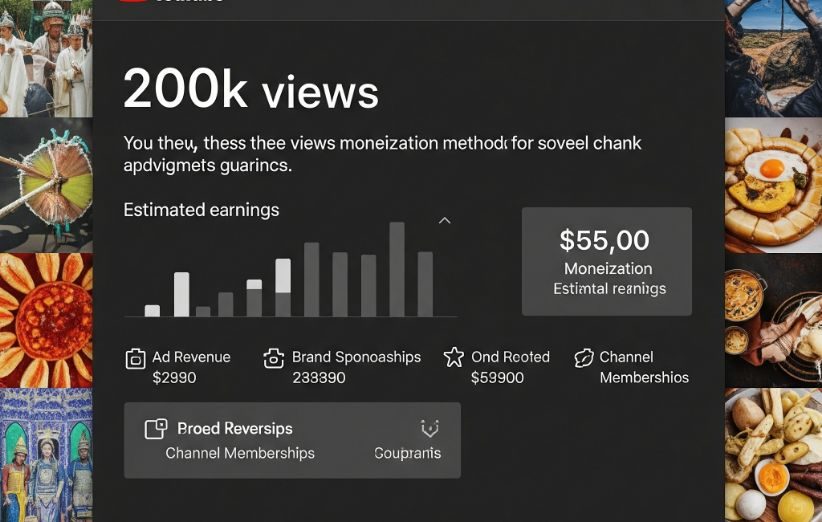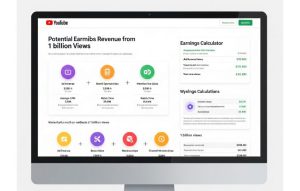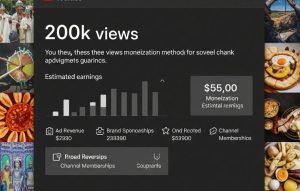Hitting 200,000 views on a YouTube video is a fantastic accomplishment. It shows you’ve created something that captures attention and resonates with a large audience. As you watch that view counter climb, the inevitable and exciting question follows: exactly how much do 200k views on YouTube pay? While you might hope for a single, magic number, the truth is that your earnings are a dynamic figure that can vary dramatically from one creator to the next.
Let’s get straight to the facts. For 200,000 views, a typical YouTube creator can expect to earn anywhere from $200 to $1,500, and in some cases, even more. This isn’t a lottery; the massive range in that figure is determined by a clear set of factors. In this guide, we’ll break down exactly what those factors are, how your income is calculated, and what you can do to ensure you’re earning at the highest end of that spectrum.
How much do 200k views on YouTube pay?
The core metric that dictates your earnings from YouTube ads is your **RPM (Revenue Per Mille)**, which means your total revenue per 1,000 views. This is the final amount you receive after YouTube takes its 45% cut. An average RPM for a creator can fall anywhere between $1 and $10, and sometimes much higher for valuable niches.
Here’s how the math for 200,000 views breaks down based on different RPMs:
- Low-End RPM ($1): 200,000 views / 1,000 * $1 = $200
- Average RPM ($4): 200,000 views / 1,000 * $4 = $800
- High-End RPM ($8): 200,000 views / 1,000 * $8 = $1,600
As you can see, answering “how much do 200k views on YouTube pay?” depends entirely on understanding and improving your personal RPM.
Understanding RPM: The Secret Metric That Controls Your Income
Many new creators confuse RPM with CPM (Cost Per Mille). Here’s the simple difference:
- CPM: This is what advertisers pay YouTube to show their ads 1,000 times. It’s the advertiser’s cost.
- RPM: This is what you, the creator, actually earn per 1,000 views after YouTube’s cut. It’s your revenue.
Your goal as a creator is to produce content that attracts a high CPM from advertisers, which in turn leads to a high RPM for you. For a deeper understanding of digital advertising, resources from Think with Google are an excellent place to start.
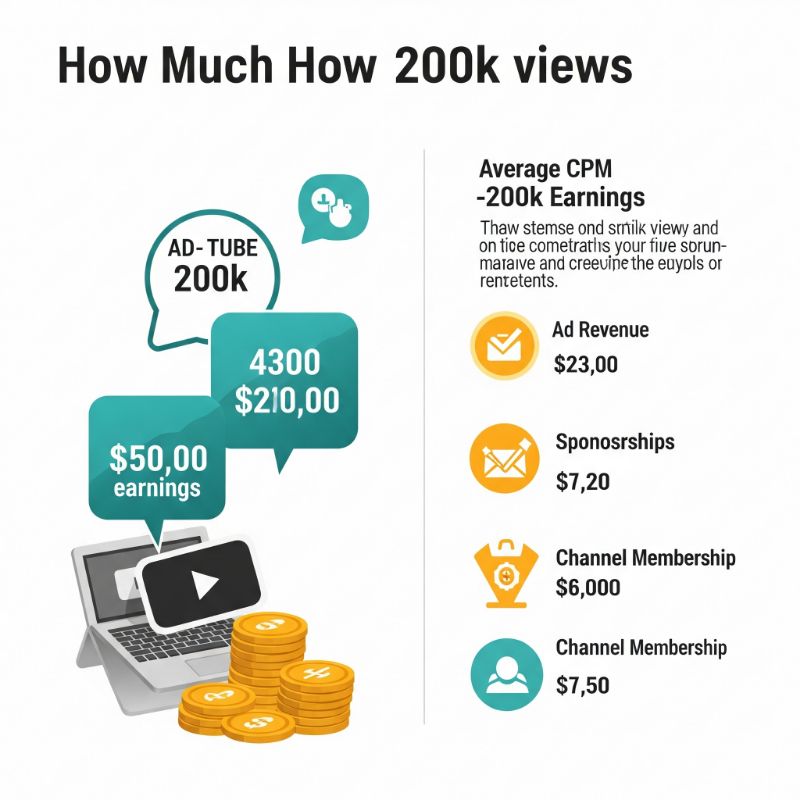
The 3 Key Factors That Determine Your 200k View Payout
Your RPM isn’t set by luck. It’s determined by three crucial factors that you can influence with your content strategy. Understanding these is the key to turning views into significant income.
1. Content Niche: Why a Finance Video Earns More Than a Gaming Video
This is the most important factor. Advertisers will pay a premium to place ads on videos that attract viewers who are likely to spend money. A video about credit cards will have a much higher RPM than a video of funny cat moments.
| Niche Category | Example Topics | Typical RPM Range |
|---|---|---|
| High RPM | Personal Finance, E-commerce, Technology, Real Estate | $10 – $40+ |
| Medium RPM | Education, Health & Fitness, Lifestyle Vlogs | $3 – $10 |
| Low RPM | Gaming, Music Compilations, Pranks | $1 – $3 |
2. Audience Location: The Geographic Goldmine
Advertisers pay more to reach viewers in countries with higher purchasing power. If your 200,000 views are primarily from the United States, United Kingdom, Canada, or Australia, your RPM will be significantly higher than if your audience is in other regions.
3. Video Length and Ad Type
Videos longer than 8 minutes are eligible for mid-roll ads, which can more than double your earnings for that video. Additionally, the type of ad shown (skippable video ad vs. a simple banner ad) also affects the payout. The question of earnings is different for short-form content, as we explored in our guide, “Are YouTube Shorts Monetized?”
Calculating Your Potential Earnings: A Real-World Example
Let’s imagine you created a 10-minute video about “Top 5 Budgeting Apps” (a finance topic) and it gets 200,000 views, mostly from the US.
- Estimated RPM: Due to the high-value niche and audience, your RPM could be around $12.
- Calculation: (200,000 views / 1,000) * $12 RPM = $2,400.
Now, imagine a 5-minute gaming highlights video that also gets 200,000 views, but mostly from a Tier-3 country.
- Estimated RPM: Due to the low-value niche and audience, your RPM might only be $1.50.
- Calculation: (200,000 views / 1,000) * $1.50 RPM = $300.
This demonstrates the incredible variance in YouTube earnings.
From 200k to 1 Million: How to Scale Your YouTube Income
Once you understand the factors that drive your income, you can start making strategic decisions to grow your channel and your revenue. The principles that determine what 100k views on YouTube make are the same ones that apply as you scale up. The goal is to consistently increase your RPM and your average view count.
As your channel grows, your potential earnings scale with it. The income from 500k views on YouTube is roughly five times that of 100k views, and you can learn more in our guide about what to expect when you hit 1 million views. It’s a competitive journey, and for a bit of fun, you can see how you compare to the top creators with our Which YouTuber Has More Subscribers Game.
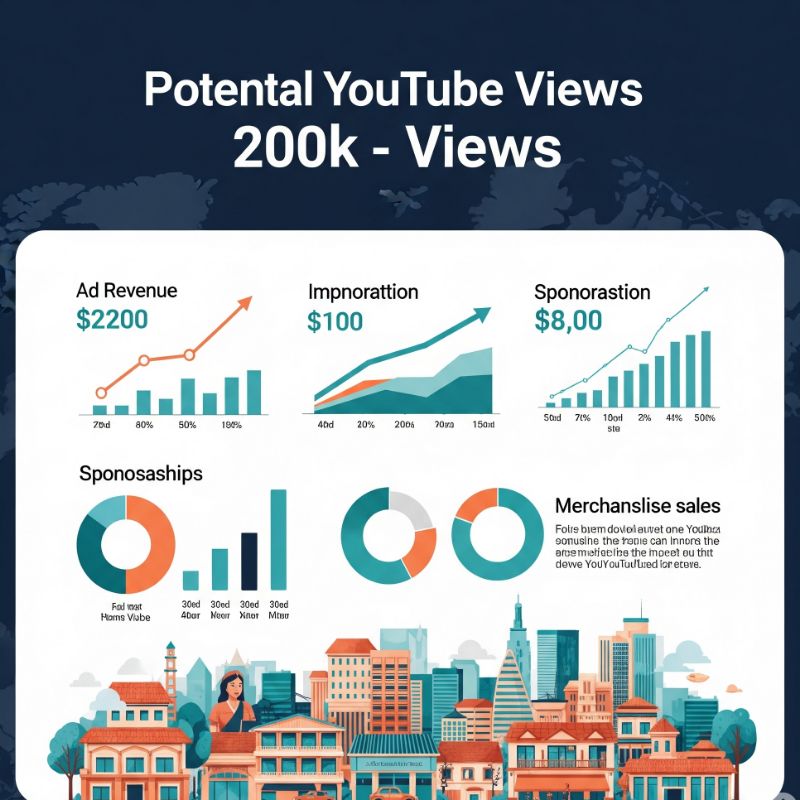
Beyond AdSense: Other Ways to Monetize Your Audience
Don’t just rely on ad revenue. With 200,000 views, you have a sizable audience you can monetize in other ways:
- Affiliate Marketing: Promote products you love and earn a commission.
- Sponsorships: Partner with brands for dedicated videos or shout-outs.
- Merchandise: Sell branded products to your community.
Sometimes, getting that initial traction is the hardest part. A high-quality YouTube SMM panel can give your videos an early boost in views and engagement, helping them get noticed by the algorithm. Find the SMM panel that fits your strategy and budget.
For more insights on creator strategies, publications like Social Media Examiner offer excellent, up-to-date advice.
Frequently Asked Questions (FAQ)
1. Do I need to be in the YouTube Partner Program to earn from 200k views?
Yes. To earn any money from AdSense, your channel must first be accepted into the YouTube Partner Program (YPP). The requirements are 1,000 subscribers and 4,000 hours of public watch time in the past 12 months (or 10 million Shorts views in 90 days).
2. Do personal views on my own video count towards the 200,000?
Yes, your own views will count towards the total view count. However, YouTube’s systems are designed to detect and discard inauthentic or bot-like viewing patterns, so repeatedly refreshing your own video will not generate significant views or any revenue.
3. What’s the difference between how YouTube and Vimeo pay?
This is a great question. As we’ve discussed, YouTube pays via ad revenue. Vimeo, on the other hand, is an ad-free platform where creators earn money by selling their content directly to their audience. We cover this in our detailed guide on the difference between YouTube and Vimeo.

